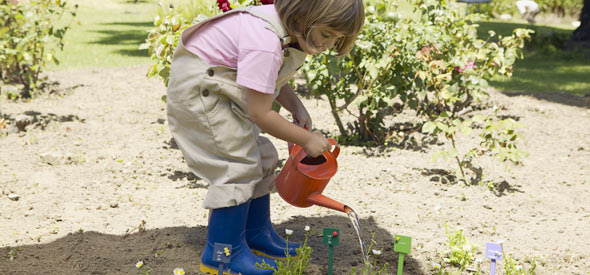Tips & Advice

EARLY SPRING
IN THE YARD
• Start winter cleanup of the lawn when the grass is no longer sopping wet and planting beds stop being a sea of mud. Rake your lawn to get rid of dead growth, stray leaves, twigs and winter debris and let light and air to the soil level, encouraging the grass to grow.
• Rolling lawns (if bumpy) will not remove unevenness but will make surface smoother for mowing. Use lawn rollers -nothing too heavy because of excessive compaction.
• Aeration helps water and oxygen permeate compacted soil. Aerating can be done anytime of year but springtime will give a good start for the lawn Rent a core type for best results, the plugs left behind will eventually decompose but may be cleaned up if desired.
• Fertilize lawns to boost growth to help the lawn become established. A light fertilization will benefit lawns thoughout the year. Early spring application with a slow release fertilizer like CIL Golfgreen is recommended.
• Topdressing Spreading a thin ½” of topdressing or compost over the lawn will help build up the organic material in the soil. It will produce a healthy long lasting lawn if done every year or two.
• Weed Control Corn gluten based fertilizer will help control crabgrass and other weeds by preventing the weed seed from germinating. It should be done early and not within a month of sowing grass seed. Weeds start growing vigorously early, so when you spot them, go to it. Getting on top of the weeding now means a lot less work later. Weeds are easier to pull out while their roots are still shallow in early spring.
• Seeding new lawns can be established from seed. Seed can be applied in early spring but may not start germinating until May, depending on the weather. Soil surface should be loose and graded before spreading seed. Sow seed at a rate of Approx. 10-15 seed/sq. inch, spread evenly. Lightly rake surface again and lightly roll if possible.
• Overseeding bare areas or weak lawns. Adding soil and seed will help thicken the lawn. Spread topdressing soil approximently ½ inch deep over existing lawn and apply seed to soil. Seeding usually doesn’t need watering unless it doesn’t rain for a long time. Seed takes time to grow so be patient – or sod instead for instant results.
Sodding. Sod is usually available early May. Place sod on soil and water thoroughly until roots are established ( a couple of weeks). Sod is usually Kentucky Bluegrass which is beautiful- but is not drought or shade tolerant.
• Remove tree guards or burlap winter protection from any young trees or shrubs. Try not to leave tree guards in place over the summer. They keep rabbits and mice from nibbling on tender bark over the winter, but trees don’t need them in summer. They don’t allow enough air movement around the base of the trunk and that can promote rot of the bark.
• Transplant any existing shrubs you want to move before they begin to leaf out.
• Apply dormant oil spray to fruit trees, magnolias, crabapples and shrubs such as euonymous to control scale insects and other overwintering pests. Use this organic pest control method when the buds are swelling but the leaves haven’t opened yet. Apply when temperatures are between 4-21 degrees C (40 and 70 degrees F).
• Get your lawn mower checked and its blades sharpened if you didn’t get the job done in late winter. Sharp blades cut better and leave your lawn grass healthier.
• Early spring jobs In the flower garden
• Don’t be in a rush to remove winter mulch or to cut back evergreen plants such as lavender until temperatures are reliably warm.
• Freeze and thaw cycles over the winter may given some of your plants the heave-ho. Replant any perennials that the frost has heaved out of the ground as soon as you can.
• Cut back any remaining dead perennial foliage from last season (trimmings can go into the compost).
• Cut back ornamental grasses to about 10 inches from the ground.
• Remove winter protection of mounded earth from roses. Prune rose bushes before they start to leaf out.
• Resist the urge to start digging in your flower beds too early. You can damage the soil’s structure. If you pick up a handful of soil, it should fall apart, not stick together like glue. When it’s dry enough, you can start to dig beds and add compost or manure in preparation for planting.
• Grass growth is vigorous in the early spring garden, so edge your flower beds with a sharp trench between them and the grass to keep it in bounds. Repeat this job a couple of times through the season, or installing permanent edging goes a long way towards having a lower maintenance flower garden.
